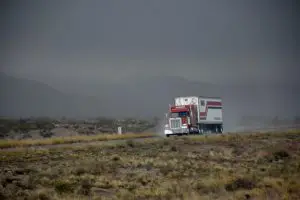Commercial driving in the US can be a lucrative and exciting career option for many as it often provides substantial pay as well as a variety of different job opportunities. There are a few regulations that a CDL holder must have a firm grasp on in order to avoid unnecessary penalties. Hours of service regulations, the regulations concerning the amount of consecutive time a CDL holder is allowed to operate a commercial vehicle, fall into this category of importance.
This article will provide you with information about the possible variations in hours of service regulations within different CDL licenses and who is expected to comply to these driving limits.
How Long Can you Drive?
There are two main hours of service regulations that are placed on commercial drivers, consecutive time driven and weekly time driven.
 Commercial drivers carrying property may drive for up to 11 hours within a 14-hour operation window following a 10-hour rest period This 14-hour window includes non-driving work such as vehicle maintenance, fuel stops and paperwork. Additionally, commercial drivers are required to take rest breaks of at least 30 minutes after no more than 8 hours of driving.
Commercial drivers carrying property may drive for up to 11 hours within a 14-hour operation window following a 10-hour rest period This 14-hour window includes non-driving work such as vehicle maintenance, fuel stops and paperwork. Additionally, commercial drivers are required to take rest breaks of at least 30 minutes after no more than 8 hours of driving.
In addition to the daily driving limited, there are laws that put limits on the amount of time someone can be behind the wheel on a weekly basis as well. CDL holders may not exceed 60 hours of operation within a 7-day period or 70 hours of operation within an 8 day period.
There are a few states that offer exceptions to the federal regulations that we will cover in more detail below.
Who is expected to comply to the driving time limit?
Any CDL holder who is operating a commercial vehicle for a company is required to abide by the hours of service regulations. A vehicle is considered to be commercial if it is carrying 10,000 pounds or more of material or if the material being transported is hazardous.
Here is a list of a few different types of commercial vehicle operation in which operation time regulations will apply:
- Passenger vehicles, buses, etc
- Waste management vehicles
- Tractor trailers
- Semi trucks
Keep in mind that if commercial vehicles are being operated for personal use, the hours of service regulations do not apply.
Are the limits different based on CDL Class?
The short answer is no. There are 3 main classes of commercial driver’s license: Class A, B, or C, class D being a regular personal use, non-commercial, driver’s license.
Anyone operating a commercial vehicle carrying property with any class CDL is required to adhere to the hours of service regulations.
However, when a CDL holder is commercially transporting passengers, the hours of service regulations are different. Commercial drivers transporting passengers, following an 8-hour rest period, may drive for 10 hours within a 15-hour work period.
Although the type of CDL doesn’t dictate the number of hours you are able to drive it may influence the type of transportation being performed.
Is this federally mandated or does it vary by state?
The hours of service regulations are provided by the federal motor carrier safety administration and are mandated by federal law. The state is accountable for enforcing these laws via police and state troopers and therefore fines and penalties for not adhering to these regulations may vary from state to state.
Certain exceptions to the hours of service regulations exist in selected states as well.
 Hawaii, for example, does not require commercial drivers to keep a an official logbook with all the federal requirements. Commercial drivers in Hawaii are given a little more wiggle room as far as logging goes as they are only required to note their time in and time out and total hours.
Hawaii, for example, does not require commercial drivers to keep a an official logbook with all the federal requirements. Commercial drivers in Hawaii are given a little more wiggle room as far as logging goes as they are only required to note their time in and time out and total hours.
Alaska allows for 15 hours of driving time with a limit of 20 consecutive hours of operation for commercial drivers. The weekly limits for commercial drivers in Alaska allows for 10 extra hours of work per day with a limit of 70 hours per 7 days or 80 hours per 8 days.
How is this tracked? Is it self-reported?
The hours driven by a commercial driver are tracked daily using a driving log and are self-reported by the CDL holder. These logs can take many forms as there are no laws regarding how the log must look only what must be included in it is mandated.
However, a grid must be included in the log with the following information:
- On duty and off duty time
- Sleep time
- Driving time
- Remarks
Remarks are notes that should insure that your log times are easily understandable and add up. For example, you might include poor driving conditions, or on/off duty changes to account for lost time on log.
What happens if you are caught driving more than the allowance?
 The penalties for driving over the hours of service limit vary in severity. Often times the driver is stopped and prohibited from continuing operation until enough rest time has been accumulated. Commercial drivers may additionally be subject to fines for violating the hours of service regulations.
The penalties for driving over the hours of service limit vary in severity. Often times the driver is stopped and prohibited from continuing operation until enough rest time has been accumulated. Commercial drivers may additionally be subject to fines for violating the hours of service regulations.
These fines are typically handed out by local law enforcement but in severe cases the Federal Motor Carrier Safety Administration might impose fines to drivers as well. Companies who allow drivers to exceed hours of service limits could also be subject to fines and penalties.
Are there any exceptions to the hours of service regulations?
There are a few specific instances in which the hours of service regulations are not applicable. This list includes some of the few major examples where these regulations are not mandated:
- Adverse driving conditions, icy roads or road closure due to traffic hazards, will allow an extra 2 hours to be added to the 11 hour time limit. Keep in mind the total hours of operation may still not exceed 14 hours.
- 16 hour short hauls are allowed so long as no more than one short haul is performed within a 7 day period.These short hauls are also allowed following a 34 hour rest period so in this case more than one may be performed in a 7 day period.
- If the transportation of goods is not related to a company or commercial operation no hours of service regulation is mandated.
- Exceptions may be made for agricultural commercial driving as well so long as it is during the planting/harvesting season.
- Emergency responders such as fire fighters and rescue workers are excluded from hours of service regulations.
- Federal government commercial driving operations are exempt from hours of service limits.
- Commercial drivers working in oil fields are exempt from the 34 hour restart rule where they only have to rest for a 24 hour period in order to reset their 7 day week hour log. Additionally drivers working for oil companies are allowed to log their wait time separately from their hours of operation so their wait time does not take away from the federal 14 hour limit.
- School bus drivers are not subject to the hours of service regulations when transporting children to and from school or home.
Operating a commercial vehicle can be a great job and a lot of unnecessary hassle can be avoided simply by becoming informed as to what the laws require of commercial drivers.
When it comes to hours of service regulations, factors such as what is being transported, the type of vehicle being used, who is employing you, and the state you are working in all influence what is expected of you.
The rules are pretty straight forward but there are a few exceptions to be aware of. Competency and accuracy in logging miles and time are additionally important as you will avoid fines and hassles.
By familiarizing yourself with the basics of hours of service regulations you are setting yourself up for a successful career.
